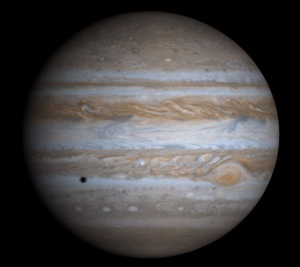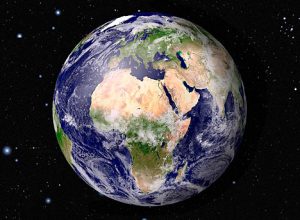
Jupiter is next in line, being the 5th planet from the Sun. But before we arrive at Jupiter we have to travel through a big asteroid belt. Sigh.
Only one of these asteroids, Vesta, is ever visible to the naked eye, and it’s not got the largest diameter! That would belong to Ceres, which is as much as 900 kilometers (560 miles) wide.
You’re VERY unlikely to get hit by an asteroid if you were to travel through an asteroid belt though…
Well that’ll do, they can get pretty boring when all the excitement of Jupiter awaits.
JUPITER!
What a beast. He/She/It ‘s (Jupiter is named after the King of the Gods from Greek Mythology) 142 984 kilometers in diameter across the equator and 43128×1015 km3 in volume. (That’s 1321.3 Earths!) And if that’s not enough, he’s
2.5 times the mass of all the other planets in our solar system!
He’s got 63 moons! But only 4 of these are large enough to be commonly sighted.
Jupiter is primarily composed of hydrogen with a quarter of its mass being helium; it may also have a rocky core of heavier elements.
NASA are planning on sending out a spacecraft to orbit Jupiter in August 2011.
For more information:
http://www.nasa.gov/mission_pages/juno/main/index.html
Oo ‘ello, what have we here then?
Jupiter has a giant red spot, if you haven’t noticed already…
It’s basically a high pressure equivalent of a hurricane on Earth, it’s said to have been going for at least 300 years.
Jupiter orbits the sun at 13km per second.
It’s mean surface temperature is -150 degrees Celsius.









